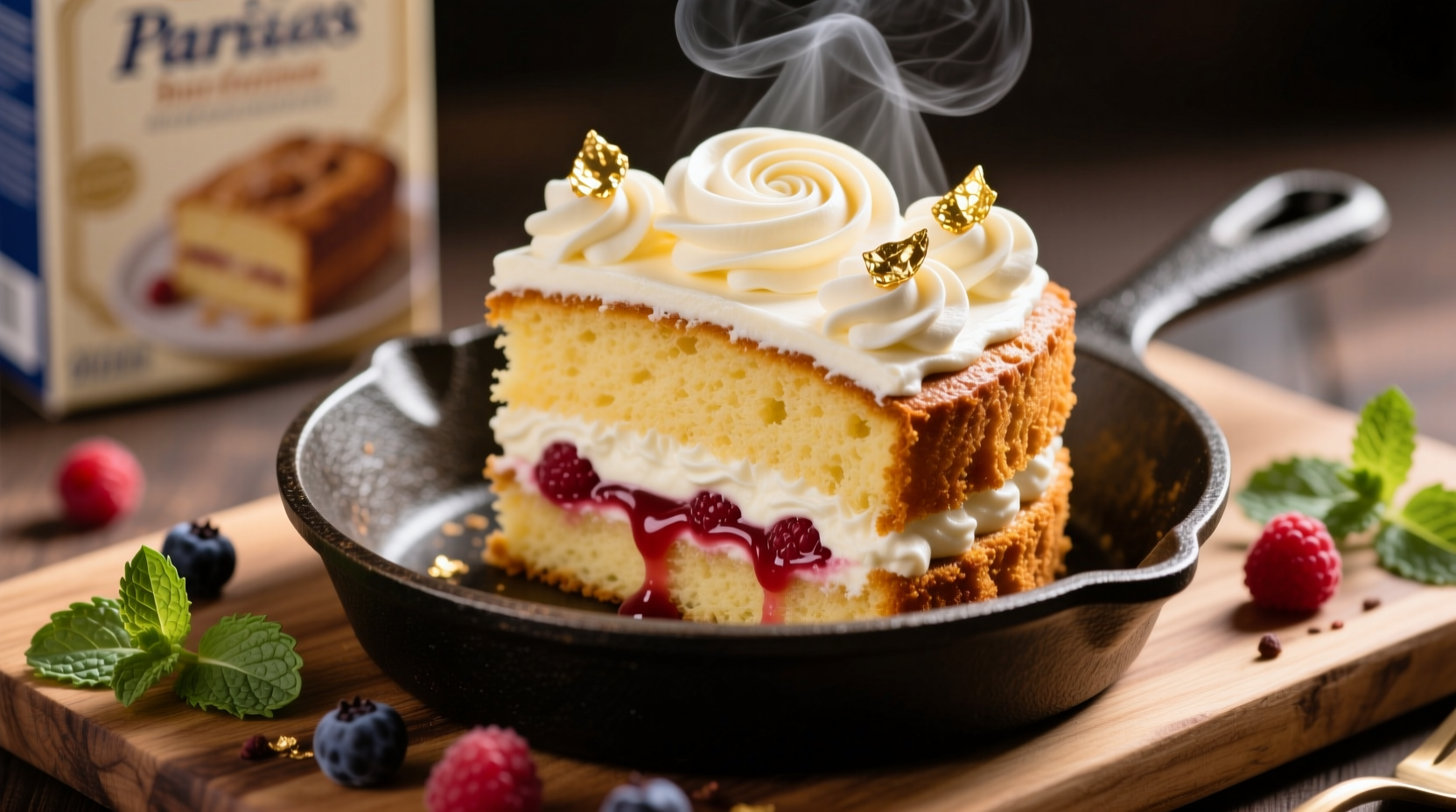Why Box Cakes Fall Short of Bakery Quality
Boxed cake mixes prioritize shelf stability and convenience over flavor complexity. Commercial bakeries use fresh ingredients, precise techniques, and flavor layering that standard mixes lack. According to research from the National Center for Home Food Preservation, the emulsifiers and preservatives in boxed mixes create uniform but one-dimensional textures compared to the nuanced crumb structure achieved through professional creaming methods.

The Essential Ingredient Upgrades
Professional bakers know that ingredient quality makes the difference between ordinary and extraordinary cakes. The Oregon State University Food Science Department confirms that substituting key ingredients transforms boxed mixes:
| Standard Box Mix Ingredient | Professional Upgrade | Impact on Final Product |
|---|---|---|
| Vegetable oil | Melted unsalted butter | Richer flavor, denser crumb structure |
| Water | Whole milk or buttermilk | Enhanced moisture, tender texture |
| 1 teaspoon vanilla | 2 teaspoons pure extract + 1 scraped vanilla bean | Complex, lingering vanilla notes |
Mastering the Professional Creaming Method
Box mix instructions typically direct you to simply combine all ingredients. Professional bakers use the creaming method to incorporate air for superior texture. Start by creaming your butter substitute with the dry mix for 3-4 minutes before adding wet ingredients. Food science research from the American Association of Cereal Chemists shows that proper creaming increases cake volume by 25% and creates a more uniform crumb structure.
Temperature Control Secrets
Ingredient temperature dramatically affects cake texture. Room temperature ingredients emulsify properly, creating stable batters. The Cornell University Food Science Department confirms that cold ingredients cause batter separation and uneven texture. Take these steps:
- Remove eggs and dairy from refrigerator 1-2 hours before baking
- Warm buttermilk slightly (not hot) if using
- Preheat oven 20 minutes before baking for precise temperature
Flavor Layering Techniques
Professional cakes feature complex flavor profiles through strategic additions:
- For chocolate cakes: Add 2 tablespoons instant espresso powder to enhance chocolate notes without making it coffee-flavored
- For vanilla cakes: Incorporate 1 tablespoon citrus zest (lemon or orange) for brightness
- Universal enhancement: Replace 1/4 cup of liquid with sour cream for tangy depth
These techniques create the multi-dimensional flavor profile that distinguishes bakery cakes from standard mixes.
Baking Precision Matters
Professional ovens maintain precise temperatures, but home ovens often fluctuate. Place an oven thermometer inside to verify actual temperature. Reduce the recommended box mix temperature by 25°F (to 325°F) and extend baking time slightly. This slower baking process creates more even rising and prevents the domed tops common with box mixes.
Finishing Touches That Impress
The final presentation makes your cake feel bakery-worthy:
- Cool cakes completely in pans (20 minutes) before removing to prevent breakage
- Brush cooled layers with simple syrup flavored with extracts or liqueurs
- Use a kitchen torch to lightly toast the top of chocolate cakes for professional appearance
- Apply a thin crumb coat of frosting before final layer for clean finish
Avoid These Common Mistakes
Even with perfect ingredients, these errors ruin bakery-quality results:
- Overmixing: Stir batter only until combined (about 50 strokes)
- Incorrect pan preparation: Use parchment circles in addition to greasing
- Rushing cooling: Warm cakes crumble when frosted
- Using low-fat substitutes: They compromise texture and flavor complexity
Frequently Asked Questions
Can I use these techniques with any cake mix brand?
Yes, these professional techniques work with all major cake mix brands. Chocolate, white, yellow, and specialty mixes all benefit from ingredient upgrades and proper baking methods. Some premium mixes may require slightly less enhancement, but the creaming method and temperature control remain universally beneficial.
How much extra time do these bakery-quality methods require?
The ingredient preparation adds about 15-20 minutes (mostly inactive time for bringing ingredients to room temperature). The actual mixing and baking time remains similar to standard box cake instructions. The extra effort yields dramatically improved results that make the minimal additional time worthwhile.
Do I need special equipment to achieve bakery-quality results?
No specialized equipment is required. A standard mixer (hand or stand), quality cake pans, parchment paper, and an oven thermometer are sufficient. The key is technique rather than tools - proper creaming, temperature control, and ingredient selection create the transformation.
Will these methods work for gluten-free or vegan cake mixes?
Yes, with some adjustments. For gluten-free mixes, add 1-2 tablespoons additional liquid as they often require more moisture. For vegan mixes, substitute plant-based butter and buttermilk alternatives while maintaining proper temperatures. The flavor layering techniques work equally well with specialty mixes.











 浙公网安备
33010002000092号
浙公网安备
33010002000092号 浙B2-20120091-4
浙B2-20120091-4